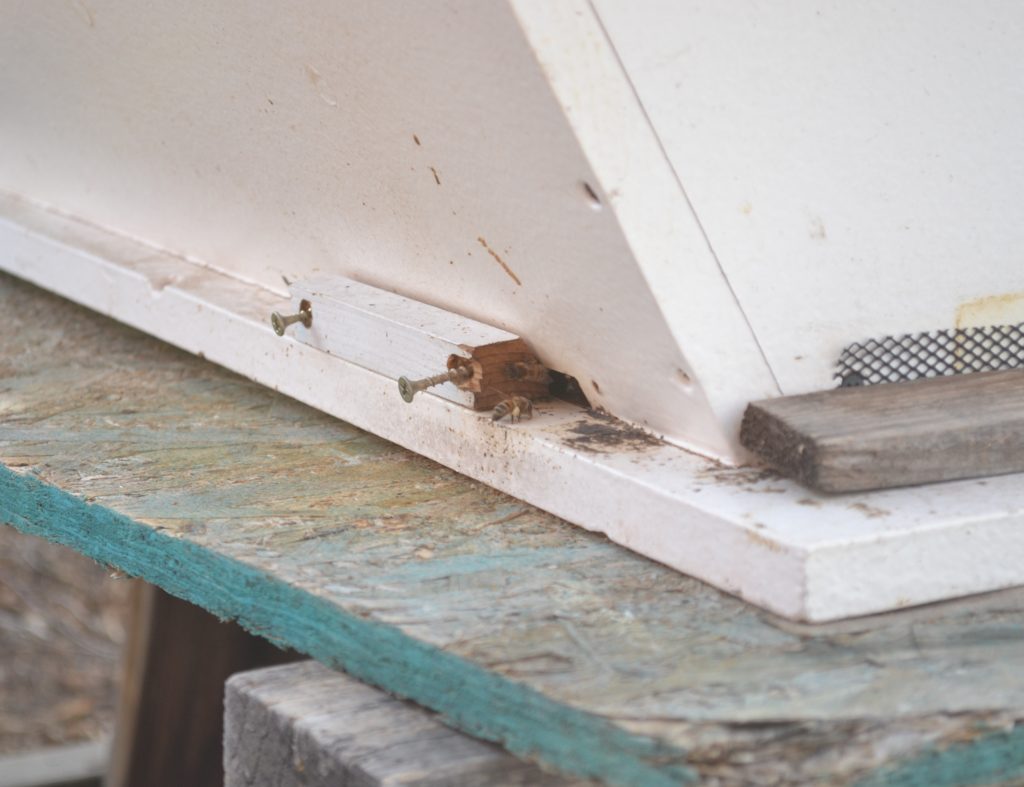Commercial and backyard honey beekeepers across the state of New Mexico are anticipating the arrival of spring to reveal how their honey bee colonies held up over the winter.
According to the U.S. Department of Agriculture Honey Bee Colonies Survey released in August 2018, New Mexico lost an average of some 1,900 colonies from January to June 2018.

Ken Hays has been in the bee business full-time since 1988. The retired air traffic controller was also president of the New Mexico Beekeepers Association for 17 years. Hays said the number one pest affecting honey bees is the Varroa mite. It has taken out half the bees in the world, Hays said.
“Without bees, we’d be out of luck, one-third of everything you put in your mouth depends on pollination by bees,” Hays said.
The Varroa mites are external parasites that feed off adult bees and developing brood (eggs), shortening and weakening their lives.

In the same USDA report, from January 2017 to June 2018 the decline in New Mexico honey bee colonies due to the Varroa mite was about 64 percent.
“The bees will be able to groom them for awhile, but they (mites) hatch so quick they can’t keep up with them, so it’s up to us to save them,” Hays said.
Hays said one tactic to fight the mites is the introduction of Saskatraz hybrid queen bees for breeding purposes because they can groom out Varroa mites at a much faster rate, slowing the infestation.
“We’re trying to breed queens where they will kill off the mites and be able to deal with them,” Hays said. “Right now they can’t.”
Without bees, we’d be out of luck. One-third of everything you put in your mouth depends on pollination by bees
Ken Hays, Former President NM Beekeepers Assn.

Backyard beekeeper and Former President of the University of New Mexico’s Beekeeping Club, Elizabeth Lake, said New Mexico is just coming out of winter, so the status of bees for this year is unknown.
A lot is riding on the health of the bees. For example, about 80 to 85 percent of honey bee hives in the United States are sent to California to help with almond pollination, despite the stress and risk is exposes the bees to Lake said.

“You’re bringing in these hives back home, they’ve possibly been exposed to pesticides while they were out there, they’ve possibly been exposed to pests,” Lake said.
Lake says Varroa mite reproduction depends on access to the queen bee’s eggs and a method called a “brood break” can help thwart the mites.
“You can do different things to stop your queen laying for a while and as long as she’s not laying any eggs there’s no place for the Varroa mites to reproduce and so that’s a natural way to break the cycle,” Lake said.
According to the Pocket Guide to the Native Bees of New Mexico by New Mexico State University, there are over 4,000 native bee species in the United States and they are classified into six major families. Bees from most of the major U.S. families are found in New Mexico.
In fact, Lake said, New Mexico is the second most diverse state for bees, behind California.

“When you get into these sorts of desert areas, that’s where the diversity of bees is,” Lake said. “So, it’s fascinating.”
Newly-elected Vice President of the New Mexico Beekeepers Association, Lu Lu Sage, said the honey bee populations fluctuate but she agrees the biggest stressor affecting them are the destructive Varroa mites.
“Most people lose their hives in the winter because the mites–the mites explode,” Sage said.
Sage explained that throughout the summer, honey bees are busy foraging and reproducing in preparation for the winter season. Then, as they start to settle down, the rate of Varroa mites continues to rise, eventually surpassing the number of honey bees.
New Mexico is the second most diverse state for bees
Elizabeth Lake, Former President of UNM Beekeeping Club

Overtime, people have tried using chemicals to kill and control the mites but they have become resistant and few things affect them, Sage said.
“I think the way that we’re going to be able to help the bees is to work on the genetics of the queen of the honey bees,” Sage said.
It is the responsibility of the beekeeper to control Varroa mite levels with tests and treatments and to genetically introduce genes to help bees evolve faster, Sage said.

“The mites are evolving faster than the bees can and the viruses are evolving faster than the bees can and the fungus is evolving faster than the bees can, so they need our help,” Sage said.
Sage said the long range ecological picture is concerning.
In addition to bees, all pollinators are being affected by climate change, Sage said. Climate change affects the blossoms that pollinators need to keep them alive.
“It’s the weather and it’s the temperatures,” Sage said.

“If bees don’t pollinate the plants, the plants are going to go extinct, there won’t be any seeds for the birds. There won’t be fruit for the birds, for other animals,” Sage said. “ We depend on the bees.”